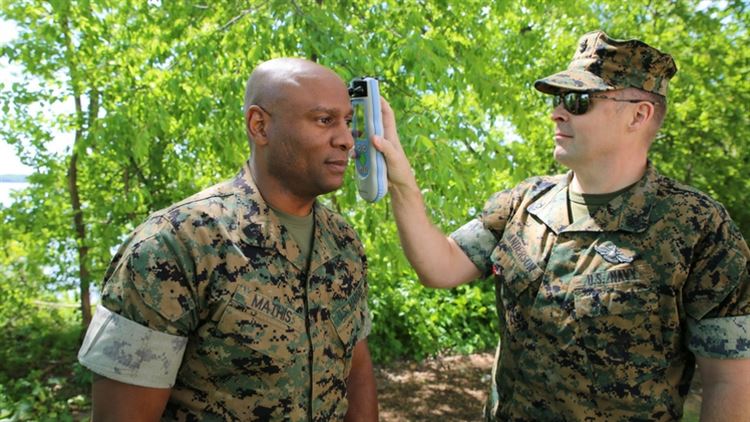-
May 09, 2022
The General and her team were hosted by Prof. Hasan Ayaz and met with group of faculty and students at Conquer Collaborative.
Read More
-

July 28, 2021
A neuroscience study on gaming with esports booster Comcast is the latest project orchestrated by the Drexel Solutions Institute as it remakes how higher education collaborates with external partners.
Read More
-

July 28, 2021
A medical device startup housed within Drexel’s School of Biomedical Engineering has spent years perfecting a brain injury scanner that is saving lives around the world as it travels a long but rewarding road toward commercial success.
Read More
-

August 06, 2019
A team of researchers has successfully measured the brain activity of pilots in real-time, a potential boon to designing better, safer machines and pilot-machine interactions.
Read More
-
November 27, 2018
Dr. Frank Krueger, Associate Professor of Systems Social Neuroscience in the School of Systems Biology at George Mason University (GMU), will give a Biomed Special Seminar titled, "Intrinsic Functional Brain Dynamics and Brain Morphology Predict Individual Differences in Interpersonal Trust" on Friday, November 30, 2018 at 9:00 AM at the CONQUER Collaborative, Monell Chemical Senses Center, Room 114, located at 3508 Market Street.
Read More
-
June 13, 2017
Your brain’s reward pathways become active during art-making activities like doodling, according to a new Drexel University study.
Girija Kaimal, EdD, assistant professor in the College of Nursing and Health Professions, led a team that used fNIRS (functional near-infrared spectroscopy) technology to measure blood flow in the areas of the brain related to rewards while study participants completed a variety of art-making projects.
Read More
-

May 11, 2017
“… and it tells us if there’s an increase or decrease of oxygenation in that area of the brain,” Dr. Hasan Ayaz was saying, holding up what looked like a neoprene scuba hood covered in plastic nodes and protruding wires. It reminded me of Doc Brown’s mind-reading helmet in Back to the Future. I tried to picture Ayaz with bug eyes and his hair grown out to mad-scientist wildness, but he’s a real-life scientist in Drexel University’s biomedical engineering department, with a firm handshake, a neatly trimmed dark beard, and designer eyeglasses. And, as my mind wandered to movie scientists, he’d been talking in measured tones about how the space-age scuba hood in his hands—as well as an equally sci-fi node-covered headband connected to another monitor nearby—can show him whether its wearer is engaged or disengaged in what he or she is doing; if the wearer is really listening to a lecture, say, or if her thoughts have wandered off …
Read More
-

May 10, 2017
The Infrascanner is a portable, medical diagnostic device that provides early detection of intracranial hematomas—or bleeding within the skull—in the field, potentially saving lives and improving casualty care and recovery. The handheld device uses near-infrared light—invisible light that is nearly visible to the naked eye—to effectively check for intracranial hematomas on different parts of the skull. With the device, medical personnel at battalion aid stations can quickly assess Marines who may have suffered a head injury.
Read More
-

March 30, 2017
You might not think, when you fly, about the air traffic controllers helping to guide you safely to your destination. But their jobs are essential and their training needs to be as advanced as possible to keep your flight smooth. As part of a new Federal Aviation Administration Center of Excellence (COE) led by the University of Oklahoma and Embry-Riddle Aeronautical University, Drexel is doing its part to ensure workers are trained with the most up-to-date methods and technologies to make flying as safe and efficient as possible.
Read More
-
February 27, 2017
Read More